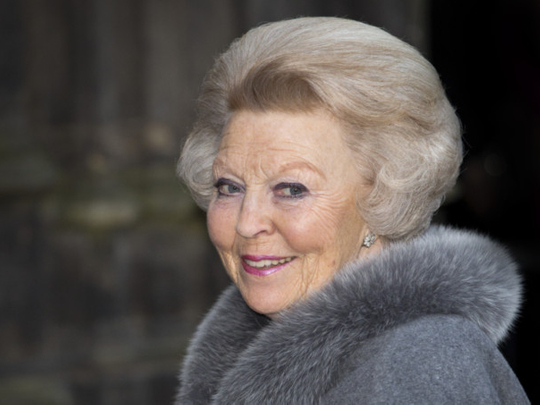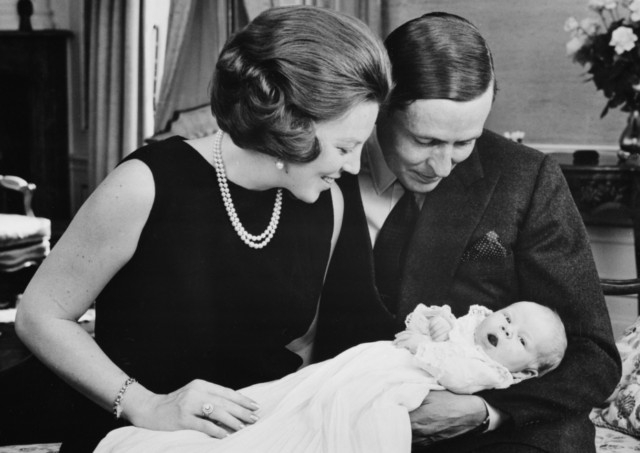
Born to Princess Juliana of the Netherlands and Prince Bernhard of Lippe-Biesterfeld on January 31, 1938 at the Soestdijk Palace in Baarn, Beatrix Wilhelmina Armgard spent her early years in Canada with her mother and sisters during the Second World War.
She became heiress presumptive to the throne of the Netherlands at the age of ten, after her mother was sworn in as queen in 1948.
On March 10, 1966, Trix, as she is called, married Claus van Amsberg, a German diplomat. Due to the bridegroom’s associations with the Hitler Youth, their wedding day saw violent protests in Amsterdam. However, by his death in 2002, he was one of the most popular members of the royal family, thanks to his approachability and involvement in public causes. The couple had three sons: Willem-Alexander (born in 1967), Johan Friso (1968) and Constantijn (1969).
A politics graduate of Leiden University, she is now one of the world’s richest women, with a personal fortune estimated by Forbes at $300 million (about Dh1.1 billion).
Royal duties
On April 30, 1980, celebrated as Queen’s Day since her mother’s time, Beatrix was invested as Queen of the Netherlands following her mother’s abdication after 31 years on the throne. Some people, including socialist squatters, used the occasion to protest against poor housing conditions and the monarchy in general.
The Dutch constitution posits that the king or queen is head of state and as a focus of national unity, remains politically neutral. As such, he or she signs all new acts of Parliament. Since the last government stripped Beatrix of the power to name a candidate to begin Cabinet formations after national elections, she now merely appoints the official who helps broker the formation of new governments.
Beatrix celebrated the 25th anniversary of her reign in 2005. Four years later, she and her family narrowly escaped being hit in a car attack by a man named Karst Tates during a Queen’s Day parade in the village of Apeldoorn.
After 33 years on the throne, the longest-reigning Dutch monarch leaves the country stronger than at the time of her ascent, and many believe she ruled so long partly because of unrest in Dutch society as the country struggled to assimilate more immigrants. In her Christmas Day speech in 2010, Beatrix made a heartfelt plea for unity, saying, “with each other we all make up one society”.
New generation
The Dutch do not see being king or queen as a job for life. In January, following the tradition of abdication established by her grandmother, Wilhelmina, Beatrix said she would step down in favour of her eldest son, because it was time to place the nation “in the hands of a new generation”.
Willem-Alexander will be the country’s first king in 123 years, beginning his reign as the monarchy celebrates its 200th anniversary. He and his wife, Maxima, told Dutch TV recently they are happy for their subjects to address them in any way they see fit. “I’m not obsessed with protocol. I will be king, but also a human being,” said Willem-Alexander.
Beatrix will now be referred to as Her Royal Highness Princess Beatrix of the Netherlands.









